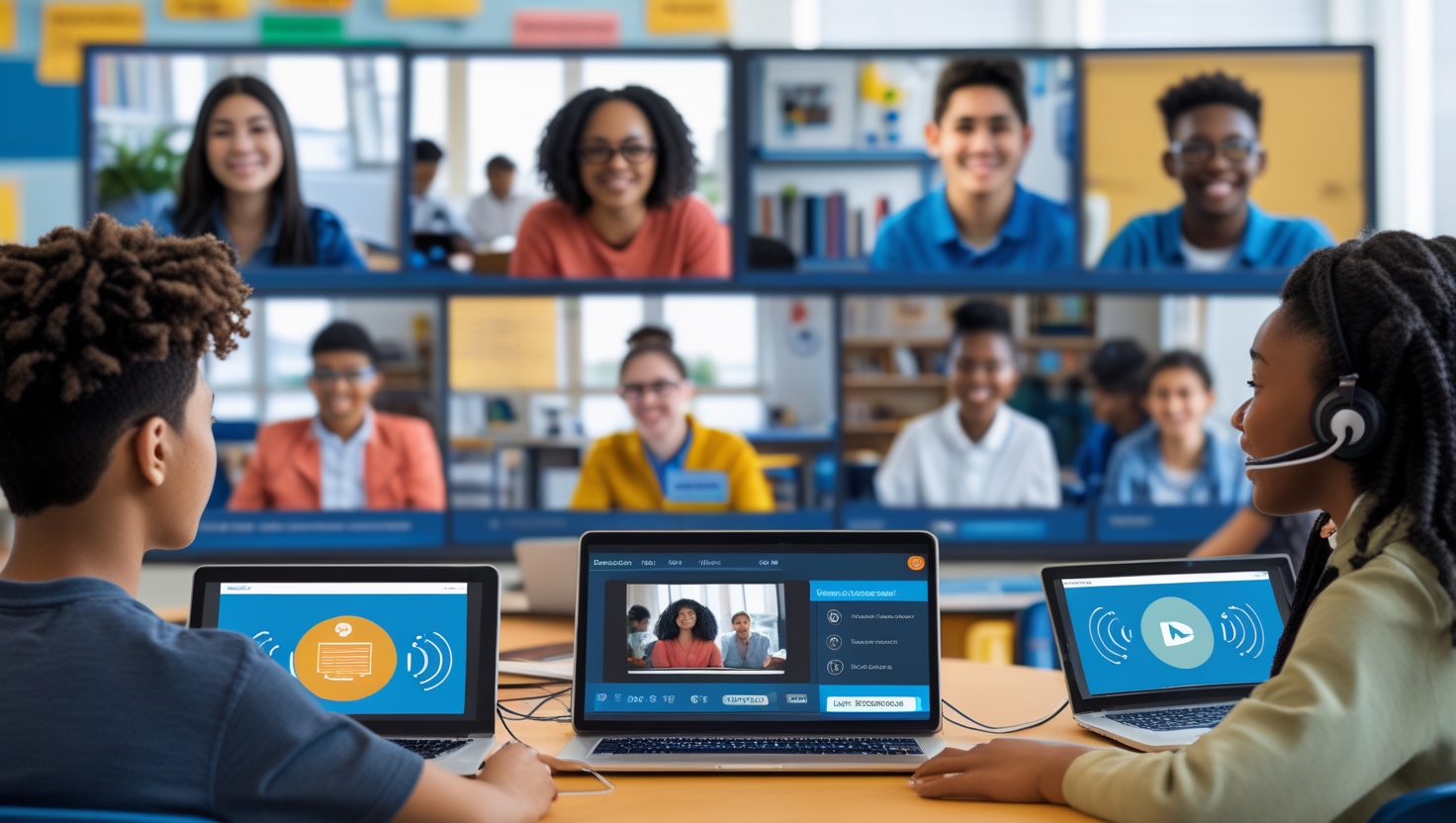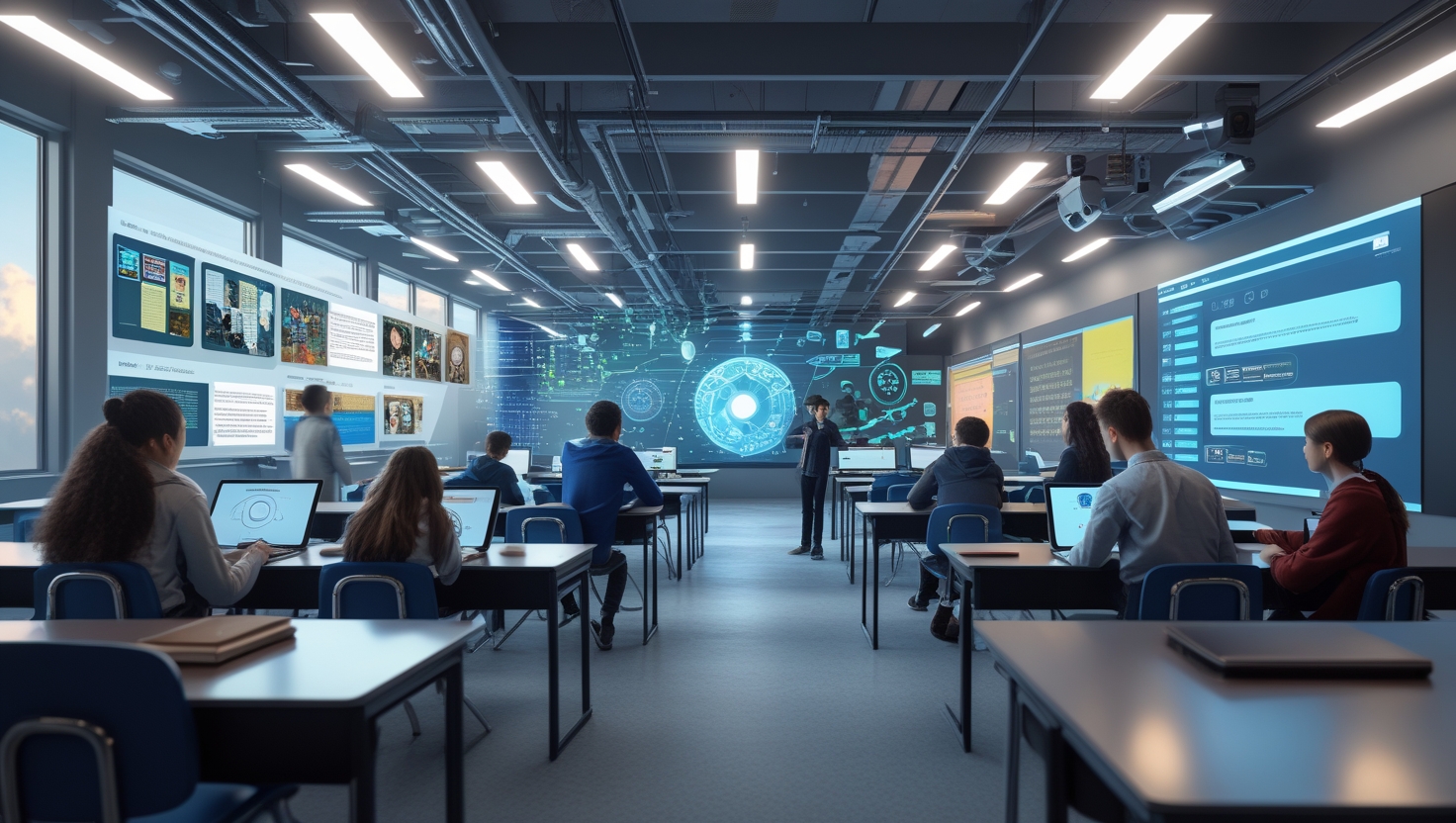In our increasingly video-centric educational landscape, ensuring that all learners can access and benefit from video content is not just a legal requirement—it's a fundamental educational imperative. Creating truly accessible educational videos enables diverse learners to engage with content effectively while improving the learning experience for everyone.
This guide explores comprehensive approaches to video accessibility, covering both technical requirements and inclusive design practices that extend beyond basic compliance to create genuinely inclusive learning experiences.
The Foundations of Video Accessibility
Accessibility in educational videos begins with understanding key principles and requirements:
Universal Design for Learning
Accessibility aligns with UDL principles by providing:
- Multiple means of representation through different sensory channels
- Multiple means of engagement for diverse learner preferences
- Multiple means of action and expression for demonstrating understanding
- Flexible approaches that accommodate different learning needs
- Options that benefit all learners, not just those with identified disabilities
Legal and Ethical Frameworks
Educational videos are subject to various requirements:
- Section 504 and 508 compliance for federally funded institutions
- Americans with Disabilities Act (ADA) provisions for educational access
- Web Content Accessibility Guidelines (WCAG) 2.1 Level AA standards
- Institutional accessibility policies and guidelines
- Ethical obligation to provide equitable educational opportunities
Understanding Diverse Needs
Accessible videos address needs related to:
- Sensory differences (vision, hearing)
- Cognitive and learning differences
- Attention and focus variations
- Language and communication diversity
- Technical and environmental constraints
Technical Accessibility Features
Several key technical elements form the foundation of accessible video:
High-Quality Captions
Effective captioning includes:
- Verbatim transcription of all spoken content
- Identification of speakers when multiple voices are present
- Description of relevant non-speech sounds
- Proper timing synchronized with audio
- Appropriate formatting for readability
While automatic captioning has improved dramatically, human review remains essential for accuracy, especially for specialized terminology and complex content.
Audio Description
This narration describes important visual elements for viewers who cannot see the video:
- Description of relevant actions, scene changes, and on-screen text
- Integration within natural pauses or via extended audio tracks
- Focus on visual elements essential to understanding
- Professional narration with clear delivery
- Options for standard and extended descriptions
Transcripts
Full-text alternatives to video content should include:
- All spoken content in sequential order
- Description of relevant visual information
- Identification of speakers
- Properly structured text with headings and formatting
- Downloadable options in accessible formats
Player Accessibility
The video playback interface must be accessible through:
- Keyboard-navigable controls
- Screen reader compatibility
- Adjustable playback speed
- Visible focus indicators
- Caption display customization
Inclusive Design in Video Production
Beyond technical requirements, accessible videos incorporate inclusive design principles from the start:
Clear Visual Design
Essential visual elements should be perceptible to all viewers:
- High contrast between text and backgrounds (minimum 4.5:1 ratio)
- Readable font styles and sizes (sans-serif fonts at 18pt minimum)
- Sufficient on-screen time for text (general rule: 3 seconds minimum)
- Limited motion in backgrounds behind text
- Avoidance of conveying information through color alone
Thoughtful Audio Design
Audio elements should support clear understanding:
- Clean, professional audio recording with minimal background noise
- Clear separation between narration and background music
- Consistent volume levels throughout
- Moderate speaking pace (around 150-160 words per minute)
- Avoidance of idioms and jargon when possible
Structural Clarity
Well-structured content supports all learners:
- Clear introduction outlining video content and objectives
- Logical sequencing of information
- Visual cues for transitions between topics
- Periodic summarization of key points
- Clear connections between visual and verbal information
Comprehensive Representation
Inclusive videos consider representation through:
- Diverse representation in visual examples and scenarios
- Cultural sensitivity in metaphors and examples
- Avoidance of stereotypes and assumptions
- Inclusive language practices
- Global perspectives when appropriate
Advanced Accessibility Approaches
Going beyond baseline requirements creates truly inclusive experiences:
Interactive Transcripts
Enhanced text alternatives can include:
- Synchronization with video playback
- Clickable text to navigate to specific video segments
- Expandable definitions for technical terms
- Search functionality within transcript content
- Downloadable formats for offline use
Multiple Language Support
Supporting linguistic diversity through:
- Multilingual caption options
- Translated transcripts
- Language-specific audio tracks when feasible
- Consideration of cultural context in translations
- Support for right-to-left languages in text displays
Cognitive Accessibility
Supporting different cognitive processing needs:
- Chapter markers for navigating longer content
- Visual timelines showing video structure
- Downloadable graphic organizers and notes
- Supplementary simplified explanations of complex concepts
- Interactive knowledge checks for self-monitoring
Alternative Formats
Providing content in multiple forms:
- Audio-only versions with enhanced descriptions
- Text-based alternatives with embedded images
- Interactive versions with embedded activities
- Downloadable presentation slides
- Printable resources that complement video content
Implementation Strategies
Making accessibility practical requires systematic approaches:
Production Workflows
Integrating accessibility throughout the creation process:
- Script development with accessibility in mind
- Storyboarding that plans for audio description needs
- Recording sessions that allow time for descriptive elements
- Budget and timeline allocations for accessibility components
- Quality control checkpoints for accessibility features
Tool Selection
Utilizing appropriate technology solutions:
- Captioning tools with editing capabilities
- Audio description software and services
- Accessible video players with customization options
- Automated quality checking tools
- Learning management systems with strong accessibility support
Training and Awareness
Building organizational capacity through:
- Accessibility training for content creators
- Clear institutional guidelines and resources
- Accessibility champions within departments
- Regular showcasing of exemplary accessible content
- Student involvement in accessibility review processes
Testing and Feedback
Ensuring effectiveness through:
- Testing with users who have diverse abilities
- Accessibility audits using established guidelines
- Feedback mechanisms for reporting accessibility issues
- Regular review and updating of older content
- Documentation of accessibility features for users
The Benefits Beyond Compliance
Accessible video design offers advantages for all learners:
Enhanced Learning Outcomes
Research shows accessible design improves learning through:
- Multimodal reinforcement of key concepts
- Support for different information processing preferences
- Improved focus and comprehension
- Better retention through multiple exposure pathways
- Accommodation of different learning environments and contexts
Increased Engagement
Accessible videos typically demonstrate:
- Higher completion rates
- Improved viewer satisfaction
- Greater interaction with supplementary materials
- Better performance on related assessments
- Increased likelihood of resource sharing
Broader Reach
Accessibility expands content utility for:
- Learners in bandwidth-limited environments who can use text alternatives
- Non-native language speakers benefiting from captions and transcripts
- Mobile users in sound-sensitive environments
- Search engine discovery through indexed transcript content
- Reuse of content across different platforms and contexts
Sustainability and Efficiency
Building accessibility from the start creates:
- Lower long-term costs compared to retrofitting
- Reusable content components across multiple formats
- Reduced need for accommodations requests
- Simplified compliance with institutional and legal requirements
- Content that remains viable across technology changes
Future Trends in Video Accessibility
The accessibility landscape continues to evolve:
AI-Enhanced Solutions
Emerging technologies are transforming accessibility through:
- Real-time caption generation with increasing accuracy
- Automated visual description capabilities
- Translation systems for multilingual access
- Content simplification for different reading levels
- Personalized accessibility adjustments based on user profiles
Interactive Accessibility
Beyond passive consumption to active engagement:
- Sign language integration through picture-in-picture options
- User-controlled display customization
- Accessible interactive video elements
- Integration with assistive technologies
- Haptic feedback systems for additional sensory channels
Standardization and Integration
Systems are evolving toward:
- Streamlined tools that integrate accessibility throughout production
- Standard interchange formats for accessibility data
- Centralized accessibility services within institutions
- Platform-level accessibility features that apply across content
- Metadata standards for communicating accessibility features
Personalized Accessibility
Moving toward individualized experiences through:
- User preference systems that persist across platforms
- Adaptive content that responds to individual needs
- Customizable interfaces for personal requirements
- Integration with personal assistive technologies
- Learning systems that adapt based on accessibility interaction data
Conclusion
Creating truly accessible educational videos is both a technical and a design challenge that goes beyond simply meeting requirements. When approached thoughtfully, accessibility becomes an integral part of quality video design that enhances the learning experience for everyone.
By incorporating accessible features from the beginning of the production process, educational video creators not only fulfill legal and ethical obligations but also create more effective, engaging, and versatile learning resources. In our diverse educational landscape, accessible design isn't an add-on—it's essential to creating truly inclusive learning experiences.
As technology continues to evolve, the possibilities for innovative approaches to video accessibility will expand, making it easier to create content that truly works for everyone. By embracing these opportunities and centering accessibility in our design thinking, we can build an educational media ecosystem where all learners can fully participate and succeed.





3 Comments
Leave a Comment